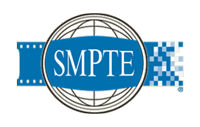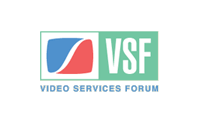About
- JT-NM ROADMAP OF OPEN INTEROPERABILITY
- Author-Contributed Content
- JT-NM Phase 1
- JT-NM Phase 2 Meeting Documents
- JT-NM Fundamental Precepts
- Phase 2 Interim Report for IBC 2014
- JT-NM Phase 2 Interim Report December 2014 (Document available to JT-NM participants only.)
- JT-NM Minimum Viable System (MVS) report introduced in the "Phase 2 Interim Report December 2014"
- JT-NM Reference Architecture V1.0 was released on September 4, 2015
- Joint Task Force announces Phase 3 to coordinate networked media industry efforts (April 2016)
- WebFirst UHD Sport Scenario Analysis (August 2016)
JT-NM Roadmap Information
The JT-NM periodically publishes a roadmap of Networked Media Open Interoperability.
The purpose of the roadmap is to help end users and suppliers as the industry transitions to IP-based technology. The roadmap shows which standards and specifications enable the JT-NM Reference Architecture, how the range of underlying technologies is expected to evolve, and when it is expected that those standards and specifications will be widely available to build interoperable multi-vendor systems.
The roadmap is published with some important notes.
LATEST JT-NM ROADMAP:
- JT-NM Roadmap of Open Interoperability (August 2017)
- JT-NM Roadmap Additional Background on Dematerialisation (August 2017)
- Roadmap Approved for NAB (March 2018)
Previous JT-NM Roadmaps:
Author-Contributed Materials
We are seeking feedback about the articles below. Please use the links provided to share your comments on LinkedIn.
Note: These articles are being made available as part of the activities of the Joint Task Force on Networked Media. The authors are solely responsible for their content. While the information contained may be of interest to those following the work of the JT-NM, these documents are published by their authors, and are not being published by the JT-NM itself.
Author-contributed Materials:
Media Architectures fit for the IT data center
Contributed by Dr. Richard Cartwright, Principal Software Architect, Quantel Ltd.
SYNOPSIS: One of the challenges facing the professional media industry is that we increasingly find that the technologies in our plants are IT-centric, and that the designs and concepts we use to build facilities are coming from the IT world. It is incumbent on us as an industry to be able to operate comfortably both in the traditional media technology space and in the IT technology space. To that end, the JT-NM system view provides a bridge between these worlds in the important areas of technologies, virtualization and service replication and modeling. Each of these will be discussed (and build on each other), in turn.
View full article PDF | Provide feedback on our LinkedIn page
The Minimalist Reference Architecture
Contributed by Charles Meyer, Chief Technology Officer, Production, Grass Valley, A Belden Brand
SYNOPSIS: There is no one answer for how to monetize content. But the tools needed to create, produce, transport, and distribute audio and video are finite and, in fact, not really that great in number. How media is processed can be very unique. This is the artistic, or creative factor that differentiates between media types, styles and content. And the elements that guide how media is consumed are based on human factors and time. It seems very logical to conclude that a viable Reference Architecture can be developed which enables media manufacturers to provide interoperability for their customers. It is indeed amazing to consider how such a simple set of principles leads to the enormous diversity of media offered to today’s consumer.
View full article PDF | Provide feedback on our LinkedIn page
Modeling with the Unified Modeling Language (UML) – A Tutorial
Contributed by Dr. Richard Cartwright, Principal Software Architect, Quantel Ltd.
SYNOPSIS: By modeling the elements of human experience that are monetized by content businesses, and by doing so using a common language that is understood widely in the IT industry, a new breed of interoperable networked-media systems can be designed and built. The result of this modeling exercise will be a concise, reusable architectural framework that is captured both as: a few pages of paper; a computer-based model that can automatically be transformed into skeleton code. The value of models is as much about providing a common language with which to explain what is being modeled in an IT context, facilitating easier dialogue between the worlds of IT and media professionals, as it is about a JT-NM user-story-derived Reference Architecture models.
View full article PDF | Provide feedback on our LinkedIn page
Phase 1
Click here for the JT-NM Vision Mission Statement
In an open, participatory environment, help to drive development of a packet-based network infrastructure for the professional media industry by bringing together manufacturers, broadcasters and industry organizations (standards bodies and trade associations) with the objective to create, store, transfer and stream professional media. The first phase of the JT-NM work was conducted on a very aggressive timeline in order to produce useful output.
JT-NM (with some 250 members) compiled a list of user requirements, and issued a Request for Technology. 27 companies responded with technology proposals. The JT-NM Task Force published the User Requirements in the summer of 2013.
A team from JT-NM analyzed the responses and compared the proposed technologies with the user requirements. The Gap Analysis Report was published in the 4th quarter of 2013.
The Task Force Sponsors have agreed to a second phase of work. Information on Phase 2 may be found here.
Phase 2
Tokyo is the capital of Japan.
It is the center of the Greater Tokyo Area, and the most populous metropolitan area in the world.
Contact
Tokyo is the capital of Japan.
It is the center of the Greater Tokyo Area, and the most populous metropolitan area in the world.
The Joint Task Force on Networked Media is sponsored by:




The Advanced Media Workflow Association (AMWA)
The European Broadcasting Union (EBU)
The Society of Motion Picture and Television Engineers (SMPTE)
The Video Services Forum (VSF)